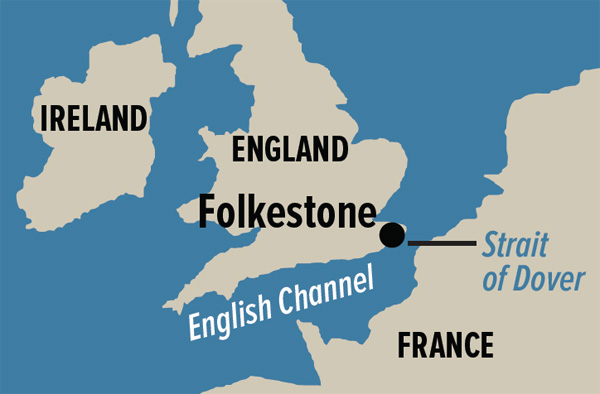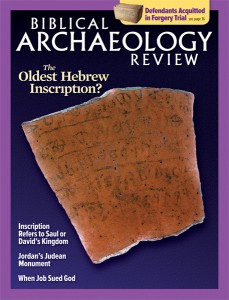
Adorned with abstract geometric symbols and a stylized depiction of a Roman trophy, this tiny gold coin, which measures less than half an inch in diameter, was recovered during recent excavations at the site of Folkestone along the southern coast of England. Perched high atop the chalk cliffs overlooking the Strait of Dover, Folkestone is most famous for its well-appointed Roman villa of the first–fourth centuries C.E. This coin, however, was excavated from the site’s earlier (and, until recently, previously unknown) (British) Iron Age levels (800 B.C.E.–42 C.E.).
The coin, known to numismatists (or coin specialists) as a gold quarter stater, was likely minted in southern England’s Kent region between 50 and 30 B.C.E.—not long after Roman forces, under Julius Caesar, reached Britain for the first time. More than 50 locally minted coins have been found at the site, together with a range of imported pottery, suggesting that Folkestone (located at the shortest sea crossing of the English Channel) was an important trading hub and a strategic coastal outpost connecting southern Britain and the European mainland in the late Iron Age.

Already a library member? Log in here.
Institution user? Log in with your IP address.

